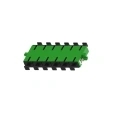An Innovative Approach to Optimize the Number of Optical Fibers in the Planning Process

The installation of indoor optical cables for various purposes has become increasingly important in modern infrastructure development. As the need for high-speed and reliable data transmission continues to rise, a well-designed and efficiently planned reserved joint box is crucial. This article introduces a comprehensive method for the design and planning of reserved joint boxes, with a particular focus on optimizing the number of optical fibers required.
1. Importance of Reserved Joint Box Design
A reserved joint box serves as a central hub for the connection and distribution of indoor optical cables. Its design directly impacts the overall performance and scalability of the network infrastructure. By providing a protected and organized space for connections, the reserved joint box enables easy maintenance and future upgrades. It is essential to consider several factors during the design process, including:
- Sufficient space to accommodate the required number of optical fibers;
- Proper cable management and routing to minimize signal interference;
- Adequate heat dissipation to prevent overheating;
- Accessible and secure layout for maintenance and troubleshooting.
2. Planning Method for the Number of Optical Fibers
Accurately estimating the number of optical fibers required is crucial to ensure optimal network performance without overspending or compromising future expansion. The following steps outline an effective planning method:
Step 1: Determine the number of terminations: Begin by identifying the number of devices or endpoints that need to be connected. This includes computers, servers, switches, and other network equipment.
Step 2: Calculate the anticipated growth: Anticipate the future growth of the network by considering factors such as expected increase in devices and potential expansion plans. This estimation helps avoid costly rework in the future.
Step 3: Assess the required bandwidth: Evaluate the bandwidth requirements of the network by considering the current and future data transmission demands. Faster networks typically require more optical fibers to handle the increased data flow.
Step 4: Account for redundancy and flexibility: Incorporate redundancy and flexibility into the design by reserving additional fibers for backup connections or future upgrades. This ensures uninterrupted service and simplifies future network expansions.
Conclusion
The design and planning of reserved joint boxes play a crucial role in optimizing the performance and scalability of indoor optical cable networks. By considering factors such as space allocation, cable management, heat dissipation, and accessibility, a well-designed reserved joint box enables efficient maintenance and future upgrades. Additionally, a meticulous planning method for estimating the number of optical fibers ensures optimal network performance while accounting for future growth. Employing these best practices will result in a robust and cost-effective indoor optical cable infrastructure.



